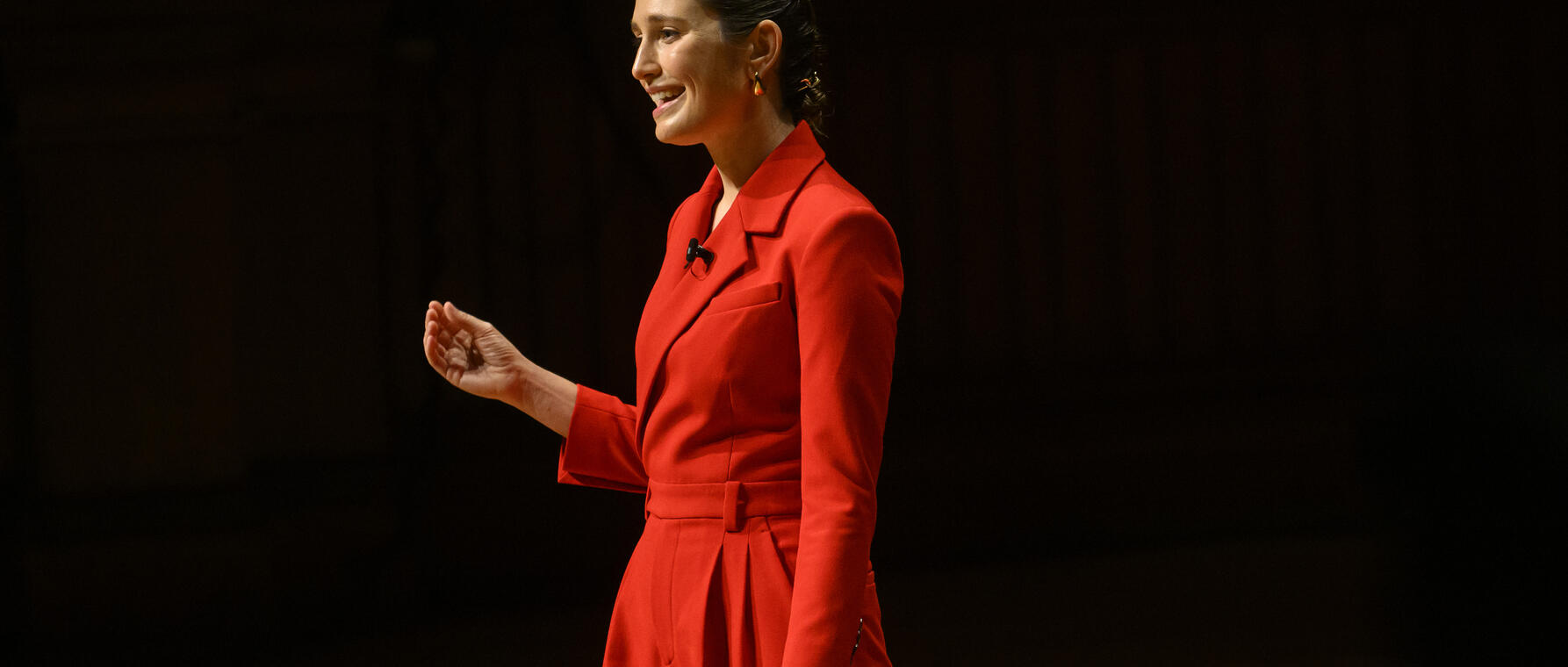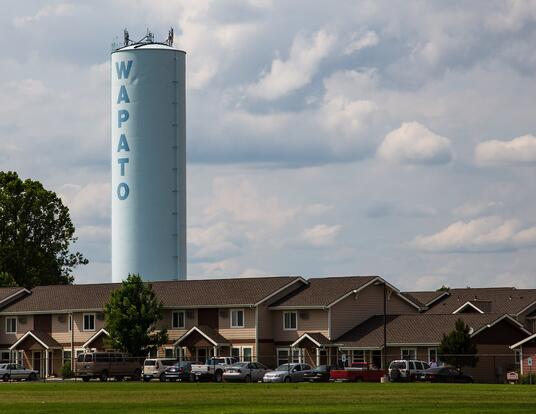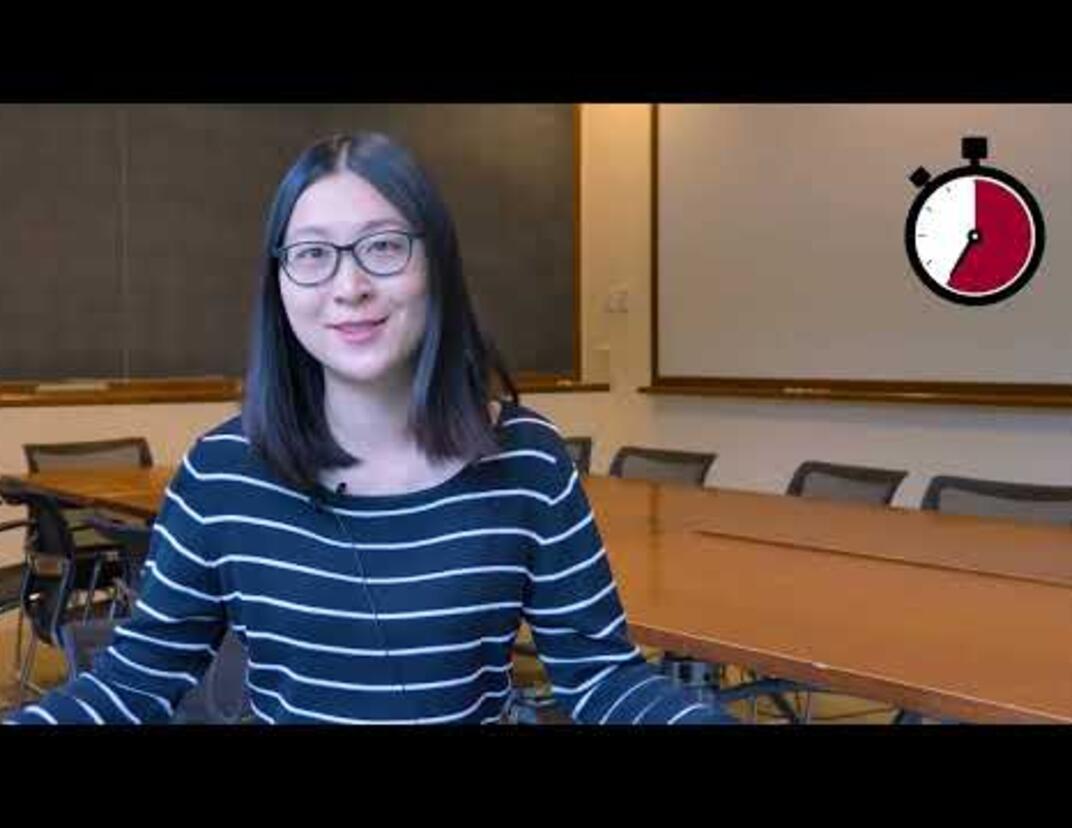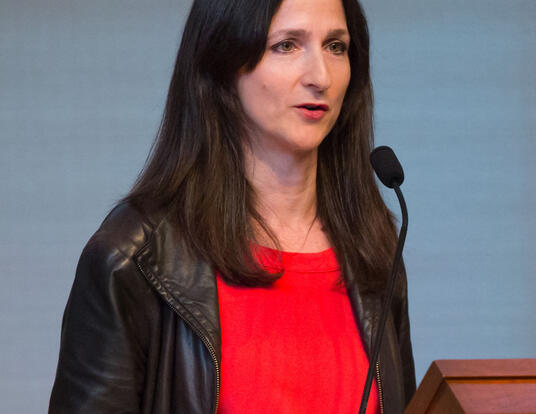Colloquy Podcast: Punished in Utero

Research at Risk: Since World War II, universities have worked with the federal government to create an innovation ecosystem that has yielded life-changing progress. Now much of that work may be halted as funding is withdrawn. Find out more about the threats to medical, engineering, and scientific research, as well as how Harvard is fighting to preserve this work—and the University's core values.
Who cares for the babies while their mothers are incarcerated? How stable are these households? And how does being exposed to a mother's incarceration in utero impact child development? These are the questions Harvard Horizons scholar Bethany Kotlar set out to answer in her research. Combining her experience working with these families and high-quality social science research methods, Kotlar goes beyond the mother-infant dyad to assess the mother-infant-caregiver triad unique to this population.
This transcript has been edited for clarity and correctness.
Eleven years ago, I sat at a metal table that was bolted to the floor and surrounded by cells. The women I sat with were incarcerated in the largest women's prison in Georgia, where I was working as a volunteer. They told me the horrific conditions that they endured giving birth during their incarceration. Their stories changed my career.
Incarceration is the only context in the US in which mothers and their newborns are routinely separated. Every year, approximately a thousand women give birth without their friends or family members present. Just hours later, their babies are taken from them. This forced separation not only traumatizes mothers, it also interrupts the necessary development of their newborns.
Newborns are primed to be with their mothers. Beyond basic needs, we know that attachment to a primary caregiver, usually a mother, is essential for child development. Yet, these babies are deprived of the ability to bond with their mothers and must instead be cared for by other people.
In the words of one mother, "Being pregnant and incarcerated meant my child was behind bars too. She suffered a lot of the same things that I suffered. I feel like she was punished in utero."
Before coming to Harvard, I spent seven years working with pregnant and postpartum women in Georgia's prisons. But I was haunted by how little we knew about their babies, exposed, and punished in utero. We lacked answers to even the most basic questions. Who cares for the babies while their mothers are incarcerated? How stable are these households? And most importantly, how does being exposed to a mother's incarceration in utero impact child development?
These were the questions I set out to answer when I became a PhD student at Harvard. I wanted to combine my experience working with these families with high-quality social science research methods. But first, I needed data, but not just any data. I needed detailed data about these children and their families from birth on. What I needed didn't exist.
So I created the Birth Beyond Bars Study, the first study to follow children exposed prenatally to their mother's incarceration and their families during the critical window for child development, from birth to age three. Birth Beyond Bars is designed to go beyond the mother-infant dyad to assess the mother-infant-caregiver triad unique to this population.
And because these babies are so desperately understudied, I took an interdisciplinary approach, blending the in-depth analysis of family narratives used by anthropologists and sociologists with survey methods created by psychologists and epidemiologists. Birth Behind Bars has already opened a window into the first year of these children's lives. Let me share with you just one of our findings.
To understand the stability of caregiving relationships, I mapped who was caring for babies every three months, from birth until their first birthday. While ideally, mothers would reunify with their babies, I found that very few did. The next best thing for babies would be to have just one caregiver, even if that's not their mother so that they could form a secure attachment relationship.
But a shocking number of these children who had already lost their mother at birth lost their caregiver too. Nearly a quarter had two caregivers, and half of these had three, all before their first birthday. How might it feel to lose the person that means the most not once, but twice?
One baby—we'll call her Imani—went home from the hospital with her father. But Imani's father struggled to care for her. And at just six months, she was taken by child welfare. A few short months later, she was placed in the care of her adult sister. Imani's sister told our interviewer that it took Imani a week after she came home to stop crying.
The good news is Birth Beyond Bars is designed to answer scientific questions and to respond to the problems it uncovers. We work with nonprofit partners, feeding them data back in real-time so that they can react. Sometimes that's simple. If a family screens positive for food insecurity on a survey, I ask our nonprofit partner to find that family food.
Sometimes our research even leads to policy change. When our data revealed that over half of caregivers struggled to afford child care, our nonprofit partner in Georgia was able to secure a guaranteed early Head Start placement for any child born during their mother's incarceration.
This research is changing lives. It's not enough. First, we haven't answered the most important question: What is the impact of being exposed prenatally to a mother's incarceration on child development? Answering this question is the next step for Birth Beyond Bars. And we're well on our way.
But research without action is not enough. While Birth Behind Bars is changing policies on a local level, we need to change the status quo on a national scale. My dream is that we can provide the data to convince lawmakers that instead of locking pregnant mothers away, we need to invest in community-based treatment programs that would allow mothers to build a brighter future for themselves and their babies without ever being separated. It's time to stop punishing these babies in utero. These children deserve better.
Get the Latest Updates
Join Our Newsletter
Subscribe to Colloquy Podcast
Simplecast





